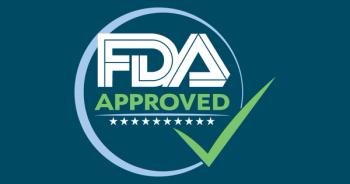Establishing criteria for pharmacologic therapy
Key Takeaways
- Pediatric obesity management requires a whole-child approach that considers physical, psychological, and social factors.
- Medication choice depends on patient preference, comorbidities, contraindications, and insurance coverage.
- Open communication, stigma awareness, and family engagement are critical for long-term success in pharmacologic therapy.
At the American Academy of Pediatrics (AAP) 2025 National Conference and Exhibition, experts discussed clinical considerations for initiating obesity medications in children.
“Obesity is defined by a body mass index above the 95th percentile,” said Ihuoma Eneli, MD, professor of pediatrics and head of the section of nutrition at the University of Colorado. “We always treat obesity as part of a whole-child approach, and that means you look at the child physically, psychologically, the environment, and social drivers of health. With shared decision-making, that helps you make your decision whether you do obesity medications or not.”
Jamie Moore, MD, a physician researcher at the University of Colorado and Children’s Hospital Colorado, noted that prior lifestyle intervention and patient interest are essential factors.
Choosing between medications
Medication selection involves patient preference, contraindications, comorbidities, and access.
“The medication choices that we’re talking about are the ones that we have the most evidence for,” Moore said. “We have phentermine, topiramate, liraglutide, semaglutide, and I’ll also include metformin in there, which is an off-label use but something that is commonly used in practice.”
Moore explained that patient preference is often central, as some therapies are oral and daily while others are injectable and weekly. Contraindications, such as a kidney stone history and mental health status, also guide decision-making. In cases where children present with comorbidities such as prediabetes or metabolic dysfunction–associated fatty liver disease, GLP-1 receptor agonists may be prioritized for their effect on hemoglobin A1c and alanine aminotransferase.
Addressing barriers to access
Access to medications remains a challenge, particularly related to insurance coverage.
“The first practical tip is that we want to use the medications that are easy to access and are inexpensive,” Moore said. She cited phentermine, topiramate, and metformin as examples that are more often available through Medicaid and commercial payers. She added that clinicians can play a role in advocating for policy updates to align insurance coverage with current evidence for pediatric obesity treatment.
Engaging families and addressing stigma
Eneli emphasized the importance of presenting all treatment options, including behavioral interventions, pharmacotherapy, and bariatric surgery, in discussions with families.
“There are usually 2 groups of families,” Eneli said. “Some come in asking for medication, and in those cases, it’s important to make sure the information they have is correct. The second group is those who have never heard about the medication or don’t think they want the medication. The most important thing is your ability to listen, to hear, and to reflect, so that conversation becomes part of an engagement that’s going to be long-term.”
Moore added that addressing stigma and bias is a daily responsibility in practice. She shared advice from a patient who told her, “When you walk into the room, don’t let my weight be the first thing that you see.” She noted that this perspective has become a guiding principle in her own patient encounters.
Both physicians underscored the need for ongoing clinical research to clarify the long-term safety and efficacy of pharmacotherapy for pediatric obesity.











